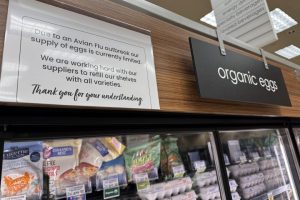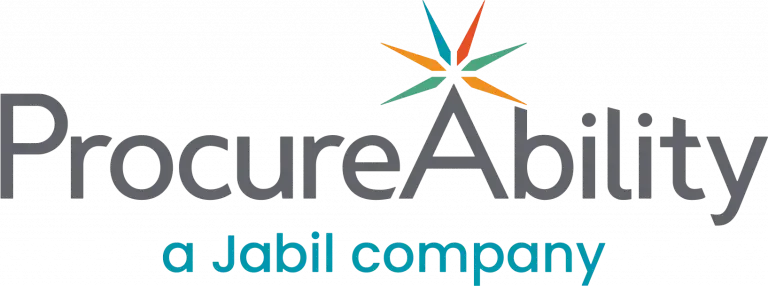A Lesson in Egg-Onomics: Tracing the Trouble with U.S. Egg Prices

Read the full article in SupplyChainBrain and below:
Avian influenza has continued to devastate poultry flocks across the U.S., as consumers have been left to deal with empty shelves at grocery stores, record-high egg prices, and no end in sight to an issue that’s been at the center of the country’s political discourse for months.
The U.S. avian flu epidemic has affected more than 130 million total birds since it began, making it the largest outbreak of the disease in the country’s history. Most recently, in the fall of 2024, spikes in the disease on East Coast farms led to the culling of 20 million chickens, which accounted for roughly 6.5% of the country’s 300 million egg-laying hens. That led to an 8.4% increase in retail egg prices for the single month of December, contributing to a 36.8% year-over-year bump, according the U.S. Census Bureau. The U.S. Department of Agriculture expects that trend to continue well into 2025, predicting another 20.3% rise in prices by the time the year is out.
But why is it that the price of eggs is seen as such a key indicator of economic health in the United States? First and foremost, there’s a short list of foods that stick in the minds of the everyday American when it comes to building out a grocery budget, and eggs are chief among them.
“They’re a fundamental staple,” says Keith Cooper, the leader of the food, agriculture & beverage practice at FTI Consulting, which provides a range of consultancy services to businesses across the antitrust, cybersecurity, supply chain, and sustainability sectors, among others.
Cooper points out that when eggs get more expensive, it can have a disproportionate impact on lower income households, which operate on thinner budgets, and rely on eggs as an affordable source of protein. The average American eats roughly 270 eggs a year, and because of that widespread consumption, any changes in cost are going to be more noticeable compared to fluctuations in other goods. That all makes the price of eggs a telling symbolic indicator of economic conditions for the vast majority of people, Cooper says.
How We Got Here
Getting the country’s avian flu outbreak under control over the last three years has proven to be a tall order for U.S. farms. At the root of it is the fact that the very conditions that allow us to pump out tens of billions of eggs a year are also what make flocks so susceptible to disease in the first place.
“The actual processes that we use for industrial production of eggs encourage the issue,” says Joe Adamski, the Senior Director for procurement service provider ProcureAbility.
Roughly two-thirds of egg-laying hens in the U.S. are kept in battery cages with less than 70 inches of space for each chicken. Those cages are packed into massive barns, keeping the hens in close quarters over the 14 months they’re typically able to lay eggs. Another 28% of hens are raised cage-free, where they have more freedom to wander and get unlimited access to food and water, but still spend a substantial amount of time close to each other indoors. All in all, roughly 94% of the country’s hens live in highly-concentrated environments where a contagious disease like bird flu can easily rip through a flock. Combined with the fact that the five biggest egg manufacturers in the U.S. control up to 40% of the country’s egg-laying hens, it doesn’t take much for a small disruption in supply to snowball quickly.
Whenever avian flu is discovered, that also means the entire flock has to be culled to limit the wider impacts. After that, a farm will clean and sterilize its barns to ensure that the disease has been fully purged. The good news, Adamski says, is that once that process is finished, it’s relatively easy to breed new chickens, starting with a three-week gestation process for a fertilized egg. A hatched chick then needs around 20 weeks to fully mature, putting the total time, from birth to egg-laying, at around six months. The less-good news is that there are no shortcuts to replacing a culled flock, nor is there any way to fully guarantee that the next group of chickens won’t also get exposed to avian flu if the outbreak persists.
“That’s going to continue to be a problem, and there’s probably not an easy fix that would be economically viable,” Adamski says.
What’s Next
American Egg Board CEO Emily Metz estimates that it will take between six and nine months to replace all the flocks that have been culled. In the meantime, egg farmers are facing what she describes as a “perfect storm of circumstances,” with the spread of avian flu having been exacerbated by changes in migratory bird patterns caused by a series of extreme weather events across the country. That was evident in one of the more recent outbreaks in Delaware in December, where the disease was traced back to as many as 50 snow geese before it spread to nearby chickens.
“We must rethink our approaches, expand what we know about this disease, and identify new methods for eliminating the threat,” Metz said in a January 28 news release.
Sharmah Seakar, the senior lead for procurement consultancy Efficio, says there are several safeguards that egg producers can take in the interim, from implementing strict policies for disinfecting equipment and footwear on farms, to limiting access to poultry houses to select personnel, in order to minimize contamination risks. For businesses that rely on a steady supply of eggs, Seakar stresses the importance of establishing relationships with a diverse array of suppliers across different regions, which provides access to competitive pricing rates from multiple farms, and limits dependency on any single region that might be impacted by a spike in avian flu.
Read the full article on SupplyChainBrain.
About Joe Adamski
Joe Adamski has more than 12 years of advisory and consulting experience centered on strategic procurement and large-scale transformations. He has deep experience in launching and executing programs focused on strategic sourcing, supply chain, procurement strategy, organizational design, and transformations.
Earlier in his career, Joe was an Air Force pilot before joining A.T. Kearney in their consumer practice. He has consulted with numerous Fortune 500 companies in a variety of industries, including utilities, CPGs, grocery, retail, telecom, apparel, food and beverage, and government.
Joe holds a B.S. degree in Physics from the United States Air Force Academy and an MBA from Emory University’s Goizueta Business School. He enjoys boating, hiking, and spending time in the outdoors.
About ProcureAbility
ProcureAbility, a Jabil company, is the leading provider of procurement services, offering advisory, managed services, digital, staffing, and recruiting solutions. For more than 25 years, we have focused exclusively on helping clients elevate their procurement function.
We combine leading methodologies, analytics, market intelligence, and industry benchmarks with our uniquely flexible and customizable service delivery model. Global organizations of all sizes trust ProcureAbility to transform their procurement operations, drive growth, and reimagine what’s possible.
Let ProcureAbility help you reimagine your procurement capabilities.
Media contact:
Kathleen M. Pomento
Chief Marketing Officer | ProcureAbility
kpomento@procureability.com



